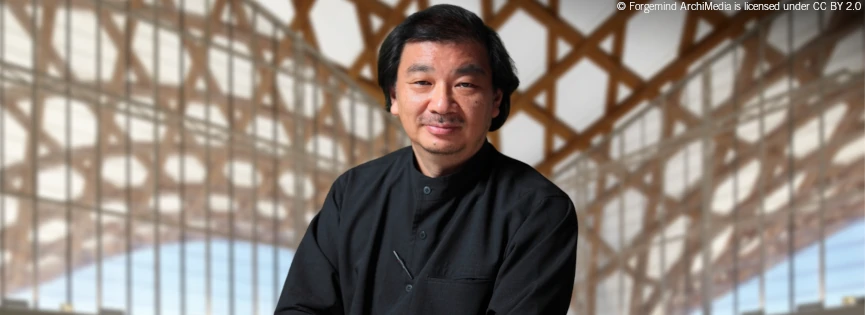Main content
Shigeru Ban 2022 Princess of Asturias Award de la Concordia

Shigeru Ban (Tokio, Japón, 5 de agosto de 1957) pasó su infancia y adolescencia en su país natal con el convencimiento de que la carpintería sería su oficio. El encargo de una maqueta de una casa para su clase de arte, cuando estaba en Secundaria, despertó su vocación por la arquitectura, mientras que un artículo en una revista especializada lo llevó a interesarse por las obras del arquitecto y teórico estadounidense John Hejduk. Desde ese momento, su objetivo fue trasladarse a Estados Unidos para formarse como proyectista. En 1977 se matriculó en el Instituto de Arquitectura del Sur de California, donde realizó sus estudios hasta 1980. Ese mismo año se trasladó a Nueva York para continuar su formación en la Escuela de Arquitectura The Cooper Union, en la que Hejduk era decano. Concluyó su licenciatura en 1984, después de compaginar sus clases universitarias con el trabajo durante un año (1982-1983) en el estudio de Arata Isozaki. En 1985 fundó en Tokio su propia firma, que en la actualidad también tiene presencia en Nueva York y París. A su labor como arquitecto se suma la de docente en universidades como la de Tokio, Harvard y Cornell (estas últimas en Estados Unidos).
Considerado el gran activista de la arquitectura por la prensa especializada, Shigeru Ban ha alcanzado prestigio internacional por ser capaz de dar respuestas rápidas y eficaces en forma de refugios y viviendas temporales a situaciones extremas y devastadoras provocadas en su mayoría por catástrofes naturales. Dichas respuestas se materializan en diseños de alta calidad, concebidos a base de materiales no convencionales y reutilizables, y en construcciones en las que la privacidad y la estética son factores importantes pues, en opinión de Ban, contribuyen a mejorar el estado psicológico de sus habitantes. Pionero en los años ochenta de la conciencia ecologista y la sostenibilidad, se preocupó también por ampliar el papel del arquitecto, cooperando con gobiernos, comunidades afectadas por algún tipo de desastre, organismos públicos y filántropos. En 1995 fue nombrado asesor del Alto Comisionado de las Naciones Unidas para los Refugiados y fundó Voluntary Architect’s Network (VAN), una ONG para transformar el concepto de vivienda temporal para situaciones de emergencia.
Hoy, el plástico, la madera, la tela, el papel y, sobre todo, el cartón son sus aliados a la hora de proyectar sus arquitecturas de emergencia, en las que lo prioritario es el máximo respeto por los futuros habitantes de esos espacios y por su dignidad. Con cartón, Ban idea cilindros que, tras recibir un tratamiento con poliuretano, se convierten en una sólida base para levantar estructuras con un mínimo coste. El diseño de una exposición de Alvar Aalto para el MoMA (Nueva York) en 1986 le sirvió para experimentar con esos tubos de papel. Mas tarde, los utilizó en prototipos de casas temporales para acoger refugiados en Ruanda –tras el genocidio de 1994– o en Kobe (Japón) –después del terremoto de 1995–. Este sistema ha sido utilizado también para la construcción de espacios de privacidad para los refugiados ucranianos en la frontera con Polonia durante la crisis provocada por la invasión rusa. En la actualidad, estudia la posibilidad de sustituir las estructuras de acero por la ligereza y resistencia de la de fibra de carbono, que facilitarían el transporte, almacenamiento y montaje.
Premio Pritzker en 2014 y doctor honoris causa por la Universidad Técnica de Múnich (Alemania, 2009) y la New School (EE. UU., 2011), Shigeru Ban ha recibido la Medalla de Oro de la Academia de Arquitectura de Francia (2004) y los premios de Arquitectura Arnold W. Brunner Memorial de la Academia Estadounidense de Artes y Letras (2005) y AIJ (2009), concedido por el Instituto de Arquitectura Japonés, entre otros reconocimientos.
End of main content
